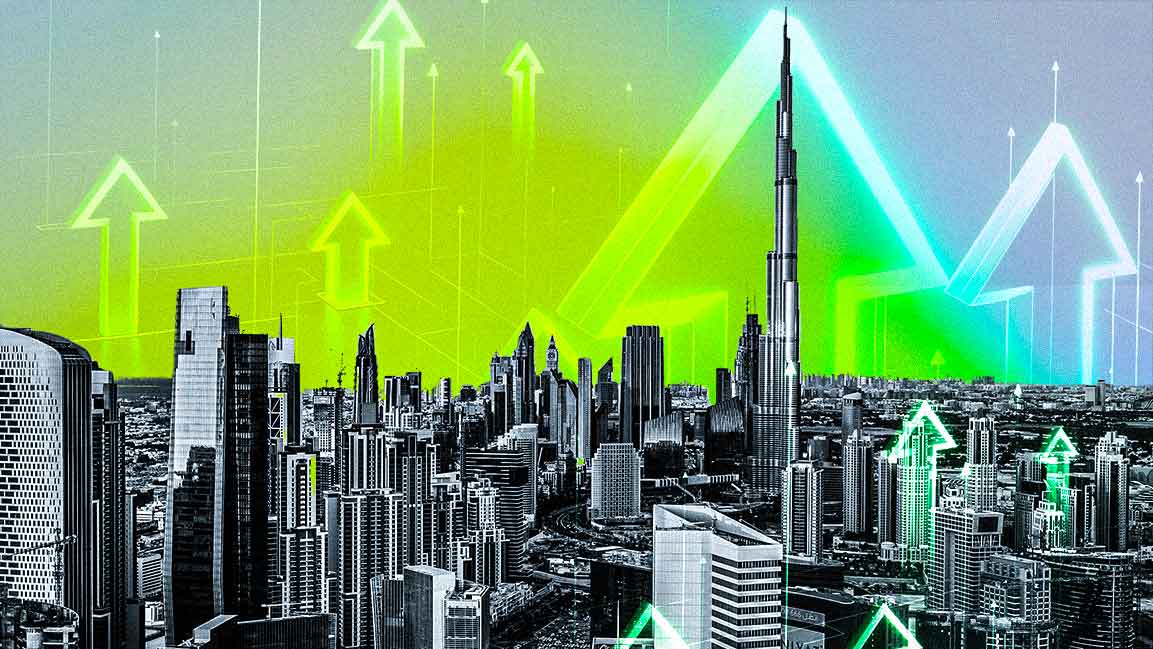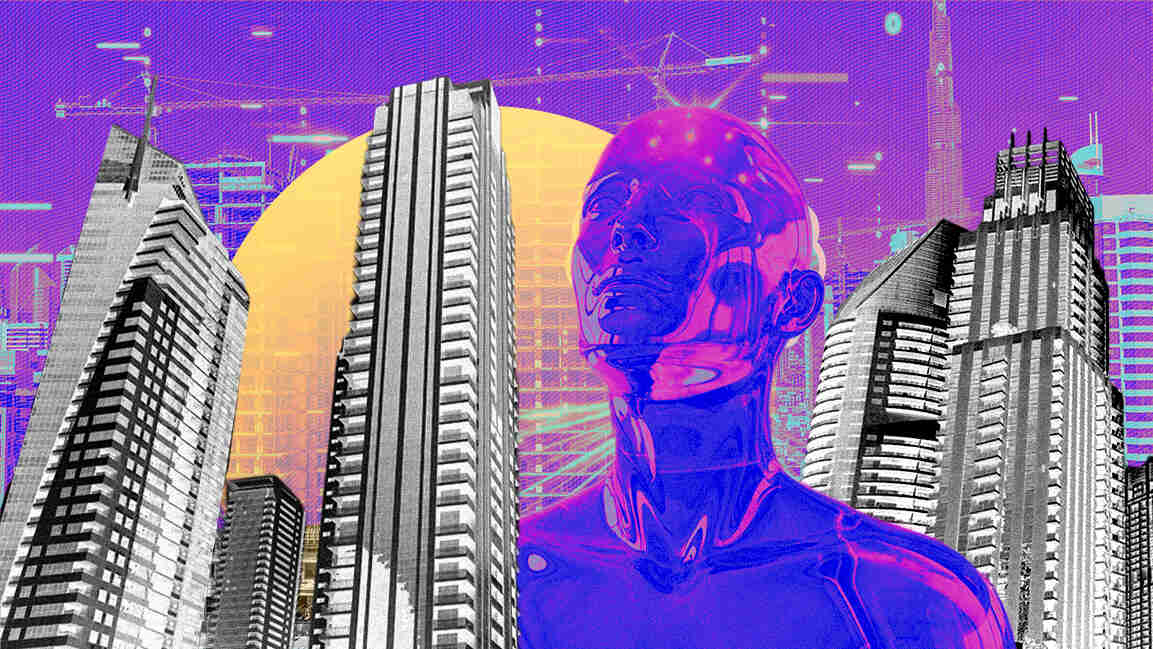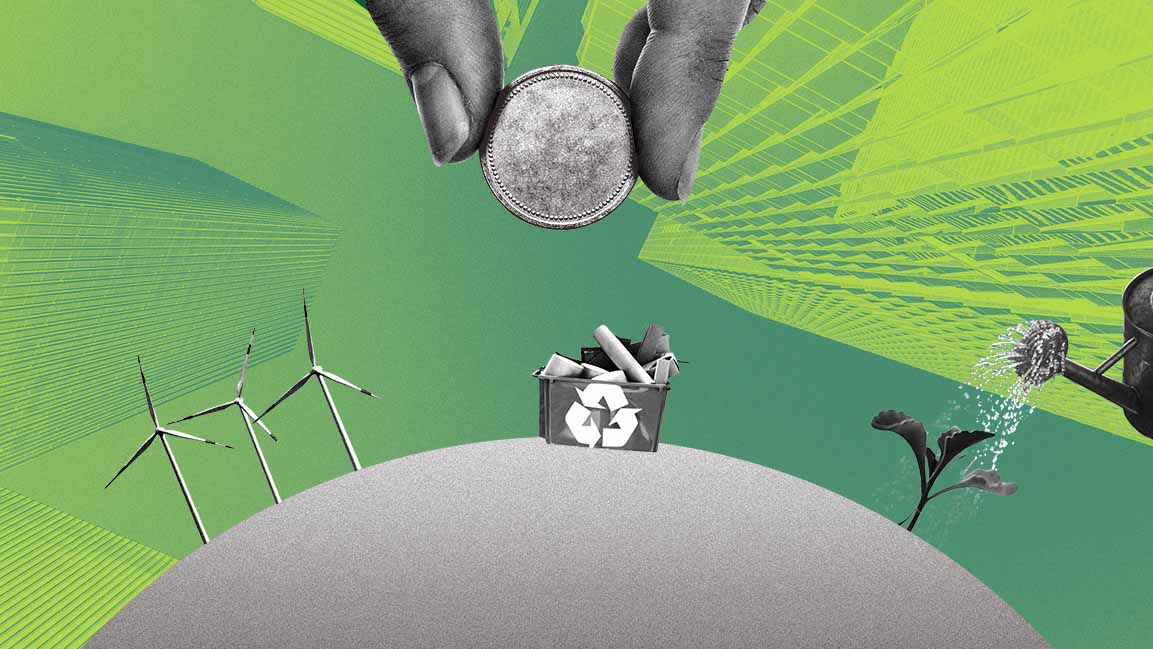- | 9:00 am
Dubai chases long-term growth. But can it outpace global headwinds?
A 4% GDP surge in Q1 suggests resilience, but experts warn the second half of 2025 could bring turbulence.

As it continues to attract people and capital, driving long-term growth, Dubai’s real estate industry and luxury tourism remain key barometers of its success. Interestingly enough, however, healthcare, finance, and trade also fuel the city’s growth.
“We’re seeing the cumulative impact of diversification strategies paying off,” said Dr. Jelena Janjusevic, Deputy Global Head of Accountancy, Economics and Finance at Edinburgh Business School, Heriot-Watt University Dubai. “What’s remarkable is how broad-based the growth is. It’s not one or two sectors—it’s systemic.”
From double-digit growth in healthcare to booming airport traffic and record real estate demand, the signs point to a city that’s redefining sustainable growth in a volatile global economy.
WHAT’S DRIVING IT?
Dubai’s economic model is showing signs of long-term maturity. According to government data, the 4% growth in the first quarter of 2025 and a GDP of $32.58 billion was led by non-oil sectors increasingly central to the city’s economic fabric.
In a press statement, Hadi Badri, CEO of Dubai Economic Development Corporation (DEDC), the economic development arm of the Dubai Department of Economy and Tourism (DET), said: “At a time when businesses, investors, and entrepreneurs are seeking stability and certainty, Dubai’s sustained and diversified economic growth continues to underscore its global appeal. Guided by the city’s visionary leadership and powered by strong public-private collaboration, Dubai’s performance through 2024 and into the first quarter of 2025 reflects our continued momentum towards achieving the goals of the Dubai Economic Agenda D33.”
“As we look to accelerate further growth, our focus remains on implementing strategic initiatives and building both local and international partnerships, in turn unlocking new opportunities, enabling innovation, and turning ideas and plans into scalable, commercial successes.”
Healthcare alone expanded 26%, contributing 0.3 percentage points to GDP, thanks to rising public and private investment in medical infrastructure, biotech, and health tourism.
“Healthcare alone added 0.3 percentage points to GDP,” Dr. Janjusevic says. “That indicates strategic public and private investment in medical infrastructure, biotech, and health tourism.”
The real estate sector experienced a 7.8% increase, contributing 0.6 points to GDP, driven by strong investor interest, project launches, and rising demand for both commercial and residential properties.
Meanwhile, financial services advanced 5.9%, adding 0.8 points—boosted by capital inflows, robust banking activity, and the continuing expansion of the Dubai International Financial Centre (DIFC).
“The real estate sector climbed 7.8%, buoyed by strong demand and new project launches, while finance and insurance rose 5.9%, reflecting the DIFC’s expansion and healthy capital inflows,” says Sam North, Market Analyst at eToro.
In tourism, Dubai International Airport welcomed a record 23.4 million passengers in Q1, helping fuel the performance of accommodation, food services, and retail.
“Transport, logistics, and tourism are once again acting as flywheels for growth,” said North. “But what’s different now is the depth and integration of these sectors into the wider economy.”
Wholesale and retail trade–the city’s most significant GDP contributor–grew 4.5%, thanks to resilient consumer demand and the continuous influx of high-spending tourists.
“Additional boosts came from accommodation and food services, manufacturing, and information and communications,” North adds, citing a wide range of sectors benefiting from Dubai’s growing economic momentum.
CAN THIS MOMENTUM LAST?
Despite continued growth, analysts urge cautious optimism.
“The growth outlook for the rest of 2025 remains positive,” said Dr. Janjusevic, “though we may see a slight moderation. Sectors like logistics, tourism, and finance will continue to anchor the economy, but global risks, such as slower growth in Europe and Asia, tight monetary conditions, and geopolitical volatility, could start to weigh.”
Dubai’s Economic Agenda (D33), which aims to double the size of the economy by 2033, continues to fuel investment in infrastructure, innovation, and sustainability—key drivers of long-term confidence.
“Dubai’s growth trajectory is expected to remain solid but moderate through 2025,” said North. “Non-oil sectors will continue to drive expansion, with PMI readings in positive territory, albeit slightly softer than mid-2024 highs.”
“Major events and projects will help sustain activity, with forecasts pointing to 3.5–4% GDP growth for Dubai and 4.5% non-oil GDP growth for the UAE in 2025,” he added.
Inflation remains low at 1.4%, and stable oil prices have provided a buffer against external shocks. However, risks such as tight global financial conditions, shipping disruptions, and regional instability could limit further upside.
THE NEXT CHAPTER: OPPORTUNITIES AND RISKS
At the same time, housing affordability, fiscal pressures, and geopolitical instability remain unresolved, especially as the cost of living rises in Dubai.
As Dubai is doubling down on diversification reforms, initiatives such as Net Zero 2050, green finance, and digital innovation are helping position the economy for long-term sustainability and competitiveness.
“Dubai and the UAE more broadly are pushing forward with trade and investment agreements, digital transformation, clean energy, and other innovation initiatives,” North notes. “Ambitious programs like D33 and foreign direct investment strategies continue to reinforce Dubai’s position as a global business and investment hub.”
Dubai’s Q1 growth numbers reflect a strategic, future-oriented model.
“It’s a strong start,” Dr. Janjusevic concludes, “but maintaining this momentum requires strategic investment, regional cooperation, and policy agility—especially in an increasingly unpredictable world.”







































